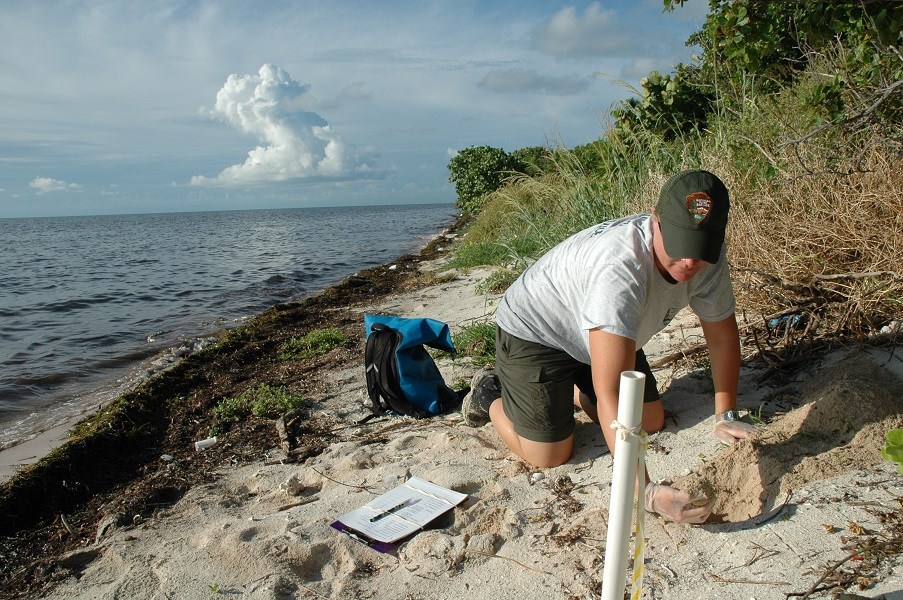
NPS image by Matt Johnson Every summer the park monitors sea turtle nests. This is done to protect nests from natural predation or unintentional damage. Monitoring efforts are concentrated on five beaches with a history of nesting activity, but other beaches are also included. Habitat restoration activities occur year round in order to improve the quality of nesting beaches available to turtles. Marine debris constantly accumulates on nesting beaches. So much trash makes it hard for sea turtles to find and reach suitable nesting spots. Beach clean-ups improve the quality of nesting grounds for sea turtles and increase the chances of successful nests. What does monitoring involve? During turtle nesting and hatching season, park resource managers and volunteers constantly patrol the beaches in search of signs of nesting activity. This activity includes tracks in the sand, excavations and trampled vegetation. Since loggerhead sea turtles typically nest at night, beach surveys are completed early in the morning. Newly discovered nests are covered with wire mesh screens that prevent raccoons from digging, but still allows tiny hatchlings to get through when it is time for them to find their way to the ocean. The mesh screen also provides a way to mark the nest and prevent beachcombers from accidentally stepping on them. Nesting beaches are monitored from May through October. New nests are usually found May through August. Hatching activity and nest assessments are conducted thereafter. Loggerhead nesting peaks in June and July, yet may begin in May and extend through September. A female can nest more than once a season. Baby sea turtles (hatchlings) emerge as soon as 45 days after the eggs are deposited in a nest. The incubation period might reach 95 days, depending on incubation temperature. The nest is monitored closely for hatching activity from day 45 until evidence of hatchling emergence is found. Hatchlings emerge from the sand and find their way to the sea using the reflection of the moonlight on the ocean to guide them to the water. For this reason, in heavily developed coastal areas with many lights, confused hatchlings often fail to make it to sea because they mistakenly follow lights from houses, buildings and vehicle traffic. Confused hatchlings are much more vulnerable to predation and heat related mortality. Park sea turtle conservation efforts, including nest monitoring and habitat restoration, began in 1984. The program improves with time. Self-releasing screens were first applied in 2000. Predation remains a threat because raccoons are numerous and actively seek sea turtle nests. They sometimes find a nest before any one else. Consistent monitoring is the best way to reduce predation levels. |
Last updated: February 16, 2017
